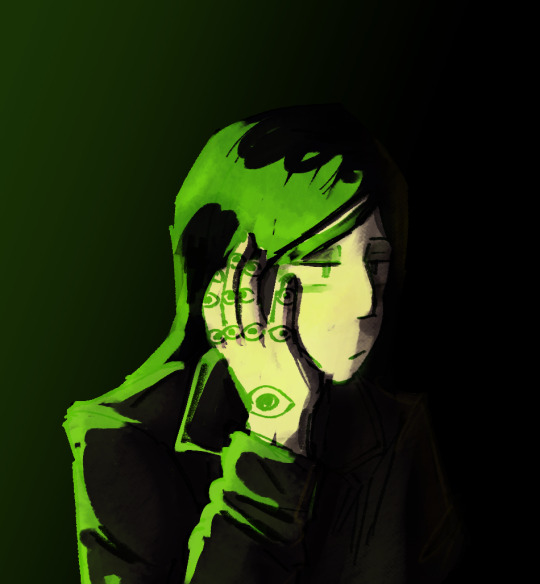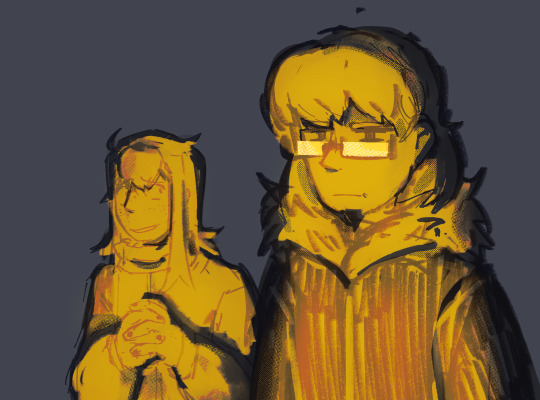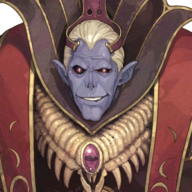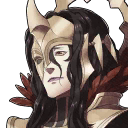#like that to be even remotely in character... cause like roma and her need to be on pretty good terms for the whole... him trusting her
Explore tagged Tumblr posts
Text


tma au cool lighting things :D
alina and kyro belong to @mayyak
#this is very good practice and not just tma roro brainrot i swear#tma au#my art#ocs#kyro#alina#roma#i wanted to include some sort of interaction in the roma and alina drawing but i don't think i understand her well enough for something#like that to be even remotely in character... cause like roma and her need to be on pretty good terms for the whole... him trusting her#enough for the whole walking into the most fucked up door ever with barely any hesitation thing ... but oh well... sorry alina your mind is#an enigma to me ... sdlkflksdjfdlkjs
14 notes
·
View notes
Text
airlock grades the Gharnef archetype
so, I got a random hankering to start a text post series where I launch myself off on reviews of each character from a certain villainous archetype in Fire Emblem -- and hey, it’s a reasonably nice time of the year to be doing posts like these, what with that new upcoming entry that we learn more about each day, isn’t it?
to kick off the festivities, I’m doing one of my favorites -- let’s see who wore the heavy robes better!
(do note: under cut are spoilers for... everything, and also a significant amount of me criticizing or blamming characters that you might like. you’ve been warned! but if you’d still persist, you childish sword lord, then come along and meet my challenge-)
the man himself
(6/10)

although the execution suffers from myriad flaws -- of which several can be touted to stem from storage space limitations in FE1 and FE3, but are inexcusably retained in the remakes -- it’s not for no reason that this fellow spawned a lengthy line of imitators.
the detail of his backstory and motivation is brillant; he’s a perfectly understandable villain without being remotely redeemable -- a much-needed class in antagonist writing for more recent entries of the series. he’s also effective as a terrifying, genuinely threatening villain, implacable and powerful.
unfortunately, however, his excellently written characterization is largely confined to flavor; it fails to inform his actions or the flow of the plot, and so, he tends to come across as a plot device instead of a character. even his takeover of Khadein is written very powerfully for something that isn’t seen and barely influences any of the game’s events. and although his sheer ambition in withholding Falchion to eventually betray Medeus ends up coming across as a plot action instead of something steeped in his essence. and this all to say nothing of his second appearance, where he fully forgoes being a character and behaves indistinguishably from a non-sentinent madness-inducing talisman.
overall, he’s a splendid concept for a villain that is ultimately laid low in execution, largely because, back in his day, the text wasn’t big enough to comfortably carry him, and the more recent incarnations were ineffective in expanding it despite having more than enough room to do so.
I also docked a point or two for being an antisemitic/anti-roma stereotype in his earlier incarnations, what with the hooked nose and rare darker skintone; the remakes thankfully eschew this by swapping out the nose and making the skintone outright inhuman, but the more recent Heroes design, while an improvement on many fronts, seems to roll back on this one.
church gharnef
(6/10)

unlike the above-mentioned, this one was in a remake that changed a lot of things; I mention this as a healthy preface to the fact that I am only familiar with his more recent incarnation!
like Gharnef above, he’s an unforgivable, but genuine villain; while a lust for power is hardly fresh as far as motivations go, the game does reasonably well at establishing that he’s already powerful and influential, and has fallen to cruel orthodoxy in a bid to eliminate threats to his power at all costs -- in other words, his characterization is timelessly realistic.
unfortunately, however, that much is all text, if not outright fanon; the story proper restricts him to behaving as an unconvincing cacklefiend playing at a kidnap-the-princess plot that the princess in question should’ve been too strong and too smart to fall prey to. making Celica a somewhat willing hostage instead of a helpless captive was a step in the right direction, but it doesn’t cover the distance; it would have been far more interesting if Jedah had gotten the chance to overpower Celica in the arena of genuine manipulation through theological debate -- and on the other coin of things, I’m sure his preying on Celica’s fears would seem a lot more organic if not for how dedicated the game is to telling her that she’s wrong before she even takes the steps across the point of no return.
he’s much like the original Gharnef in being an intriguing concept that falls flat on execution, although with both of those qualities amped up -- even more interesting in theory, even flatter in practice.
discount gharnef
(2/10)

sorry not sorry for nicknaming him that!
I believe I’ve said it a number of times and I’ll say it again: Manfroy is a manipulative villain in a setting full of people who don’t need manipulation to make bad decisions and ruin their own lives. he comes across as a plot device at the best of times, and as a null factor at the worst of times; he brings nothing to any cutscene that he appears in.
Seliph’s visit to the Yied Shrine alludes to his backstory -- that which he shares with the rest of the cult -- but this instance is even poorer than previous examples at establishing a plot presence; it not only fails to inform Manfroy’s choices in any interesting way, but it’s also outright contradicted by his actions sometimes (cfr: withholding the Naga tome, in a move that brings Gharnef’s playbook to mind but makes no sense at all for Manfroy).
points have been docked again for racial stereotyping, also; the sprite alone doesn’t make it very evident but he’s also got a face that can be used as a fishing pole.
irrelevant gharnef
(1/10)

Veld is a step beneath even Manfroy, as yet another pointless manipulative villain -- notorious for stealing a slice of agency from one of the far more genuine antagonists of the setting -- who doesn’t make his presence felt at all. I was halfway tempted to consider Raydrik the actual Manfroy here, even.
he retains one point only for not being a racial stereotype, for once.
the absence of a gharnef
(wha?/10)
Binding Blade, for all its highly repetitious usage of archetypes (being, in fact, arguably responsible for making them a thing in the first place, where they were previously just repetitive Kaga quirks), seems to have eschewed the Gharnef. this actually somewhat works in its favor; although the game’s plot is ultimately one of the shallower ones in the series, the lack of a core manipulative villain puts the focus on the self-interested factionalism that each country suffers from as they fail to mobilize a resistance against the primary villain. so, overall, an approach that would have worked out great in Jugdral.
monsterfucker gharnef
(8.5/10)

where Binding Blade had succeeded in building a plot that doesn’t need a Gharnef, its prequel was successful in the opposite: creating one of the most effective incarnations of the archetype to date, and making him front and center, to boot.
although all Gharnefs thus far have been manipulative villains, Nergal and his cronies are the first ones who show true skill in manipulation -- as in, conning people into acting against their interests, in situations where they otherwise would not have. through this, he cements himself as the primary antagonist and driver of the plot, where his predecessors were content, if dishonest, in serving a greater evil. and he brings very perceptible weight to the position, specially in the scenes where he presses the buttons of the heroes; although he fails to ultimately discourage them from defeating him, it comes across as a result of heroic strength, not of ineffective villainy.
that said, however he shimmers and shines as the heavy, he’s somewhat held back by his backstory -- one that only partially succeeds at informing his actions (however compelling it is when it does manage to do so), and worse, is largely locked to second-playthrough bonuses, where the story would’ve benefitted much more from naturally doling out his secrets along the way.
I also docked a half-point because the pseudo-turban and goatee arguably veer into the racial stereotype territory again, although he at least has the point-for of not having an outright gonk design (even when the turban goes off). I should be clear: it’s not that I oppose having nonwhite/nonwestern elements on an antagonist at all, it just comes across rather poorly when certain elements are only seen on antagonists, and especially if it’s always on the ugly ones.
twink gharnef
(10/10)

Lyon is the apex of plot-driving gharnefs, plain and simple. undeniably sympathetic, but impossible to save, whether he’s too far gone or was never redeemable to begin with -- and in fact, this ambiguity is easily the most brillant aspect of all of the writing in Sacred Stones.
he’s characterized effectively from wire to wire: his appearance, mannerisms and fond flashbacks do an excellent job of disarming the player while setting them up for a staggering plot twist, but the game is also not too hesitant to bring the plot twist to fruition and saves enough time to keep building on him past the point when the big secret is out -- sidestepping a pervasive trap that otherwise often causes plot twists to weaken stories. and all the way to the end, it’s difficult to narrow his character down to one narrative that doesn’t feel strictly like a personal interpretation; there are as many Lyons as there are players, right down to the point where he comes across differently depending on whether you’re playing as Eirika or Ephraim!
there’s also credit to be given to the remainder of the cast that effectively props him up; because he has underlings that behave strongly on their own motivations -- and sometimes beyond even Lyon’s control -- he spares himself from behaving as a plot device to focus fully on serving as the genuine core of the story as a whole. I suppose he’s a good delegator if nothing else, eh?
depression gharnef
(4/10)

unlike the above, Sephiran fails crucially in one regard: he’s set up as an extremely endgame plot twist, which, coupled with a frantic, breathless third act that insuffices to fully explore the implications of the reveals it dishes out, causes his reveal to land closer to shock value than to the completion of an arc.
while his backstory is breathtakingly fascinating, it serves exclusively as a footnote to eulogize him with; it’s not just that his actions don’t seem to be informed by it, but rather that his actions completely lack weight in the plot, making it even somewhat arguable to class him as a Gharnef at all. in Path of Radiance, he only appears as an irrelevant mystery, and Radiant Dawn coming out to accredit him for some number of Ashnard’s deeds fails to budge that one’s sheer weight and doesn’t change perspectives.
it’s quite a shame, because in concept, he could’ve been the next Lyon; but the execution is painfully fragile, and amidst the complex web of characters and plots in Tellius, his greater-scope motions fail to be felt whatsoever until the late chapters of Radiant Dawn’s Part 3.
DIWNLF gharnef
(0/10)

(that’s “dad I would not like to fuck”, incidentally)
it’s not for no reason that this guy is the only major antagonist that Awakening doesn’t let you trip over still alive and kicking somehow. he is 100% plot device, adds nothing to the story or to any single scene that he appears in, lacks in personality, doesn’t present any sort of challenge that isn’t erradicated without fanfare by the protagonists, and doesn’t even have any sort of a backstory.
and he’s a racist stereotype on top of all that, so he doesn’t even get a mercy point like his similarly irrelevant predecessor from Thracia 776.
I have not played the game with this gharnef
(??/10)

I don’t even know if he counts; I see a lot of back-and-forth in that regard.
anyways, what do you all think? “oh my god someone finally said it”, or perhaps “I will kill you but not as hard as you assassinated my favorite antagonist”? if the upcoming Three Houses is to have a Gharnef, do you have any hopes for what they’ll be like? this is all nice and open to replies and reblogs, folks! don’t be shy! yes.... do it... succumb to the temptation.......
41 notes
·
View notes